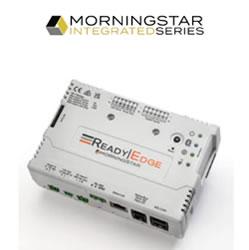Canada launches clean energy software
Canada's Environment Minister, the Honourable John Baird, and the Honourable Gary Lunn, Minister of Natural Resources, officially launched the latest version of RETScreen, a software tool originally developed by Natural Resources Canada to help access the viability of clean energy projects.
Canada's Environment Minister, the Honourable John Baird, and the Honourable Gary Lunn, Minister of Natural Resources, officially launched the latest version of RETScreen, a software tool originally developed by Natural Resources Canada (NRCan) for renewable energy technologies.
Minister Baird was joined in Indonesia by Ian Morton, one of Canada's Eminent Advisors, founder of the Clean Air Foundation and Chief Executive Officer of Summerhill Group.
"Today's announcement demonstrates how Canada is developing and sharing knowledge that allows Canadians and the global community to make cleaner energy choices," said Minister Baird. "Renewable energy initiatives play a significant role in Canada's fight against climate change, and RETScreen is helping to improve air quality and reduce greenhouse gas emissions in Canada and abroad."
"The Government of Canada is proud of RETScreen and the international cooperation its widespread use symbolizes," said Minister Lunn, speaking from the Parliament Hill. "The world is moving to address climate change and the environment, and RETScreen puts Canada at the forefront of clean energy decision-making expertise."
This Canadian software, which NRCan provides for free to industry and the public, has become an international success story. It is used worldwide by more than 129,000 people, including architects, planners, investors and industry decision makers. In a new version that includes energy efficiency, the demand for RETScreen is set to explode.
The Government of Canada and partners have invested $1.8 million over the past two years in the latest version of RETScreen. This version includes a full array of financially viable clean power, heating and cooling technologies, and energy efficiency measures. The new energy-efficiency models are used for residential, commercial and institutional buildings, and for industrial facilities and processes. RETScreen now features access to NASA's global climate data for the entire surface of the planet.
"In recent months, we have expanded and improved NASA's base climate data to 22 years, providing data parameters, including weather and solar energy, tailored right to the needs of RETScreen," said Dr. Paul Stackhouse of NASA's Langley Research Center. "These data sets are the result of scientific research funded through NASA projects at Langley and other centers."
Another major new feature is improved accessibility. RETScree software has been translated into 26 languages, representing about two-thirds of the world's population.
"This new version of RETScreen is going to dramatically improve how public and private stakeholders develop energy efficiency, cogeneration and renewable energy projects around the globe," said Dr. Marianne Osterkorn, International Director of the Renewable Energy and Energy Efficiency Partnership (REEEP).
RETScreen was developed by NRCan's CANMET Energy Technology Centre in Varennes, Quebec, in collaboration with several partners, including the National Aeronautics and Space Administration's (NASA) Langley Research Center, based in Hampton, Virginia, and the Renewable Energy and Energy Efficiency Partnership (REEEP), based in Vienna, Austria.
Featured Product

